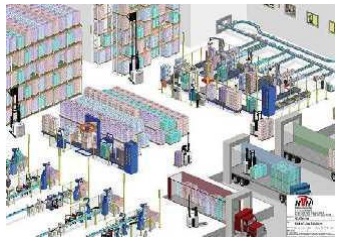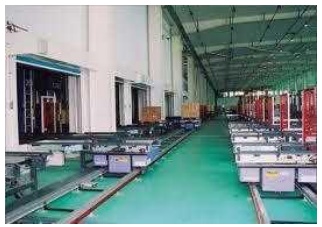Chapter: Mechanical : Robotics : Implementation And Robot Economics
AGV & RGV types of robots
AGV
& RGV types of robots
Automated
Guided Vehicles:
An AGV is a computer controlled,
driverless vehicle used for transporting materials from point-to-point in a
manufacturing setting.

They represent a major category of
automated materials handling devices. They are guided along defined pathways in
the floor.
The vehicles are powered by means of
on-board batteries that allow operation for several hours between recharging.
The definition of the pathways is
generally accomplished using wire embedded in the floor or reflective paint on
the floor surface. Guidance is achieved by sensors on the vehicles that can
follow the guide wires or paint.
When it arrives at the proper
destination, the material is off loaded onto another conveyor or the
workstation. The vehicle is then dispatched to the next location or to home to
await further orders. A computer controls its motion.
The
key terms in AGV are Guide path — The term guide path refers to the actual path
the AGV follows in making its rounds through manufacturing plant. The guide
path may be of the embedded wire type or optical devices.
Routing — It is the ability of the AGV to make
decisions that allow it to select the appropriate route as it moves across the
shop floor.
Towing vehicles
These are the most
widely used type of AG V‘s and are calledTheyare mostthe commonly used for
transporting large amounts of bulky and heavy materials
from the warehouse to various locations in the
manufacturing plant, e.g. driverless train
Unit load vehicles
They are used in
settings with short guide paths, high volume, and need for independent movement
and versatility. Warehouses and distribution centres are the most likely
settings for these vehicles. They can operate in an environment where there is
not much room and movement is restricted.
Rail
Guided Vehicles:

Motorised vehicles that
are guided by a fixed rail system constitute a third category of material
transport systems.
If the system uses just
one rail it is called a monorail system; whereas it can also consist of a
two-rail system. Monorails typically operate from a suspended position
overhead, while two-rail systems are generally found on the plant floor.
Vehicles operate
asynchronously and are driven by an on-board electric motor, with power being
supplied by an electrified rail. This removes the necessity of stoppages owing
to battery-power wear-out, as with AGVs, but it presents a new safety hazard in
the form of the electrified rail.
Routing
variations are possible in rail systems through a combination of turntables,
switches, and other specialised track sections. This allows different loads to
travel different routes, in a similar manner to an AGVS.
Sorting Transfer
Vehicle (STV) is a fast, flexible and easily installed material transport
system. STVs can be used to move loads of all sizes in a warehouse.
STV features sorting
and collecting capabilities for multiple AS/RS aisle conveyor stations. It enables
picking by order line and sorting by destination to one.
The STV track can be arranged in a loop or straight line to accommodate a variety of applications, such as mixed SKU pallet picking, cycle counting, quality inspection, load sorting and truck loading.
Advantages
of STVs include: fewer motors, no single point of failure, high-speed,
high-throughput and expansion flexibility to handle future growth.
Related Topics